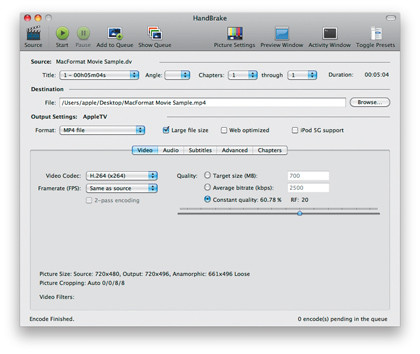Mac mini vs iMac: which is the best value?
We help you decide which desktop Mac to buy

The price difference between Apple's cheapest and most expensive Macs is huge. The Mac mini costs £649, but if you've lots to spend and you configure your Mac of choice at the online Apple store, you could spend tens of thousands. We're not going that crazy here.
For this technological take on David versus Goliath, we're pitching the Mac mini against the iMac, the top-of-the- range 27-inch model with a 256GB solid-state drive alongside its off-the-shelf 1TB hard drive. It's an intriguing battle.
Both machines are consumer-oriented, unlike the Mac Pro which is more of a business computer. And although the iMac is obviously far more powerful, at £2,249, it's also a lot more expensive. If money was no object it would demolish the far cheaper Mac mini, but as it stands, it must work really hard to justify the £1,600 price difference. So which Mac offers better value for money?
The Mac mini, with its (relatively) low price and a performance that's fine for day-to-day computing, or the mighty top-of-the-range iMac, boasting incredible power, a gorgeous display and a solid-state drive? We devised a series of tests to put them through their paces.
Apple's entire iMac range has now moved to Intel's new Core-i series chips. The one on test here has an immensely powerful quad-core 2.8GHz Core i5 processor with some significant performance enhancing features.
Turbo Boost, which is lacking on the Core i3 chips used by the rest of the iMac range, shuts down inactive cores and boosts the power of active ones for increased clock speed. Also, an integrated memory controller limits the time the CPU spends waiting for data to arrive.
Unfortunately for the Mac mini, a legal dispute prevents Nvidia graphics chipsets from being integrated into Core-i processors, and the mini's small form factor makes it impossible to include discrete graphics. As a Core i3 processor without a discrete GPU would be a backwards step in graphics power, Apple was forced to stick with the older Core 2 Duo processor in the Mac mini, opting for a 2.4GHz version with the mid-2010 release.
Sign up for breaking news, reviews, opinion, top tech deals, and more.
For our first test, we used the popular benchmarking utility Xbench to see how the processors compared. Xbench can test a wide range of Mac ecosystems such as hard drives, memory, threads and OpenGL, but here we restricted it to benchmarking the processor.
Taking the average of three tests, the iMac scored 225.36, with the Mac mini coming in at 170.9. A convincing win for the iMac, but considering the price difference, the mini was far from disgraced.

Raw benchmarks can be a little nebulous, so we next tried a real-world test. After downloading the popular – and extremely processor-intensive – video conversion utility Handbrake, we encoded a five-minute test video using its Apple TV output settings.
The iMac managed it in 175.5 seconds, whereas the Mac mini took 520 seconds, almost three times as long. But given the iMac costs almost three and a half times as much as the mini, Apple's small form factor Mac once again held its own.
Glorious graphics
On paper, the iMac's graphical capabilities roundly trounce the Mac mini's. Its ATI Radeon 5750 with 1GB of onboard GDDR5 SDRAM is a significant step up from the HD 4850 with 512MB used by the previous generation's top-of-the-range iMac.
As the mini doesn't have room on the logic board for discrete graphics, it uses an integrated Nvidia GeForce 320M chipset. This isn't such a weak option. The 320M is currently the fastest integrated graphics solution available, and it's up to twice as fast as the Nvidia GeForce 9400M used before.
We tested with Cinebench 11.5, a tool that gives comparable ratings for 3D rendering. Again taking the best of three tests, in order to focus on the graphics card we recorded the OpenGL score rather than the CPU benchmark we use for our graphs in Mac reviews. This test renders a complex 3D scene using almost a million polygons and a range of advanced graphical effects.
The Mac mini achieved an average running speed of 11.57 frames per second, which is pretty good considering the complexity of the scene being rendered. The iMac, however, scored a smooth 32.07FPS – almost three times the rate offered by the mini.

It's a similar story with our test game, Doom 3. After setting the screen resolution to 1024x768 pixels and cranking graphical effects to Ultra Quality, the Mac mini ran it at an average of 54.2FPS, which is far from shabby. But the iMac managed a scorching 185.3FPS, almost three and a half times as quick as the mini.
This figure is on a par with their comparative costs, but hard-core gamers will appreciate the super-speedy frame rates offered by the iMac. Everything feels snappier and more responsive.
So the Mac mini is no slouch in the graphics department, but for high-intensity tasks such as gaming and rendering, you likely want an iMac.
- 1
- 2
Current page: Mac mini vs iMac: which is the best value?
Next Page Mac mini vs iMac: storage, display, audio